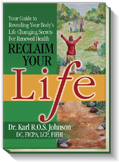 For those who suffer from chronic pain, discomfort is a way of life. As difficult as it is to navigate daily living with chronic pain, it is not impossible. Through management techniques and support resources, those with chronic pain can maintain fulfilling lifestyles. Here are some tips and resources for help.
For those who suffer from chronic pain, discomfort is a way of life. As difficult as it is to navigate daily living with chronic pain, it is not impossible. Through management techniques and support resources, those with chronic pain can maintain fulfilling lifestyles. Here are some tips and resources for help.
Debilitating pervasive pain affects many
According to the Centers for Disease Control, 11 percent of adults in the United States experience daily pain. This affects their ability to work and comfortably care for themselves. The pain can be debilitating. Usually, chronic pain starts with an injury or disease, but it can also seemingly materialize out of nowhere. When pain persists for 12 weeks, it becomes medically referred to as chronic. Pain can be sharp or dull, steady or intermittent, but it continues. This pain can manifest itself as headaches, lower back problems, arthritis or nerve damage-related pain. Nerve damage is considered to be a reason for some pain persisting after an injury has healed, or disease has been treated.
While the causes of pain include injury and disease, recent studies have found a possible neurological reason for lingering discomfort. This identification of neuroinflammation in some regions of the brain may one day help doctors objectively measure pain intensity, and as a result, may be able to more safely tailor treatment.
Chronic pain can be insidious in how it spills over into other areas of a patient’s life. Debilitating pain can keep a person from attending to other responsibilities, such as housework and caring for other family members or pets. For people suffering from physical pain that precludes activities such as dog walking, hiring a dog walker or pet sitter can be an easy way to cope. Since chronic pain can be intermittent, pet care services or household services such as home cleaning can help alleviate pressure.
Treatment options are varied
Opioids are commonly prescribed for pain management, but there are concerns raised from the growing national opioid crisis about the safety of these painkillers. Alternatives include nonsteroidal anti-inflammatory drugs (NSAIDs), which include standard pain relievers such as ibuprofen, naproxen, and aspirin. Other pain relievers include acetaminophen and certain antidepressants that target nerves. While these medicines may dull sensation and alleviate discomfort, they do not cure the underlying cause of the pain. For many patients, this requires healing that can only accompany a multifaceted approach to pain management.
Non-pharmaceutical interventions are one such path. Exercise, physical therapy, massage, yoga and mindfulness have all been medically recognized, not only as adequate pain treatments but also as preferred first courses of action before aggressive drug therapies. These non-drug treatments help foster a holistic approach to care. While severe pain may only be treatable with an opioid, the potential for abuse or dependency may be reduced through exercise or self-care.
Some with chronic pain have found Animal-Assisted Therapy (AAT) to be helpful. Studies have shown that incorporating AAT into waiting rooms and other areas of treatment have a noticeable effect on pain reduction, stress alleviation and mood-boosting. Likewise, animals in the home can be a treatment source, as long as the patient can either handle animal care themselves or has resources to provide care and attention.
Chronic pain sufferers can combine therapies to normalize their lives. In cases of intermittent pain, severe flare-ups can be met with medicine, while milder pain can be treated naturally. Self-care and alternative treatments such as AAT and neurofeedback can bolster care, while support resources can help a patient maintain fulfilling lifestyles. While medical research continues to search for safe neurological focused pain management that steers away from dangerous opioids, patients can take simple steps in their own hands to increase their comfort.
Always remember one of my mantras., "The more you know about how your body works, the better you can take care of yourself."
For more details about the natural approach I take with my patients, take a look at the book I wrote entitled: Reclaim Your Life; Your Guide To Revealing Your Body's Life-Changing Secrets For Renewed Health. It is available in my office or at Amazon and many other book outlets. If you found value in this article, please use the social sharing icons at the top of this post and please share with those you know who are still suffering with chronic health challenges, despite receiving medical management. Help me reach more people so they may regain their zest for living! Thank you!
ALL THE BEST – DR. KARL R.O.S. JOHNSON, DC – DIGGING DEEPER TO FIND SOLUTIONS
Photo Credit: Pixabay



